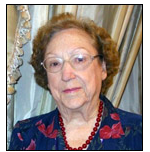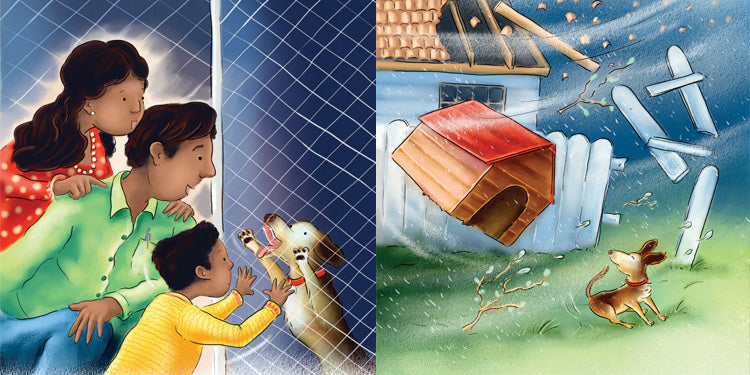 This is a guest blog post by Dr. Geraldine Haggard, who
is a retired teacher, Reading Recovery teacher leader, author, and university teacher.
It is the second post in a series of posts on using books for building inference skills. You can see the first post
here
and the second post
here
.
This is a guest blog post by Dr. Geraldine Haggard, who
is a retired teacher, Reading Recovery teacher leader, author, and university teacher.
It is the second post in a series of posts on using books for building inference skills. You can see the first post
here
and the second post
here
.
In this series of blog posts, I have been looking at the use of guided-reading-leveled books in the early grades to develop problem solving and inference skills in young readers. In the previous two posts, we looked at how this can work in kindergarten. Today, I will focus on second grade. Let's start by looking at the Common Core Standards for second grade that relate to
A Look at Grade Two National Standards Connected To Inferences
LITERATURE
- Ask and answer questions 'who', 'what', 'where', 'when', 'why', and 'how' to demonstrate understanding of key details in a text. (CCSS.ELA-LITERACY.RI.2.1)
- Acknowledge the differences in the point of view of characters, including speaking in a different voice for each character when reading dialogue. (CCSS.ELA-LITERACY.RL.2.6)
- Use information gathered from illustrations and words in print to demonstrate understanding of characters, setting, and plot. (CCSS.ELA-LITERACY.RL.2.7)
- Determine the meaning of words and phrases in a text relevant to a grade topic or subject area. (CCSS.ELA-LITERACY.RI.2.4)
- Identify the main purpose in a text, including what the author wants to answer, explain, or describe. (CCSS.ELA-LITERACY.RI.2.6)
- Describe how reasons support specific points the author makes in a text. (CCSS.ELA-LITERACY.RI.2.8)
Now we’ll take a look at some examples of how to use leveled readers to teach these skills and help your students meet the standards.

Book One:
Hurricane Dog
Book one is
Hurricane Dog
by Sharon Rasmussen Powell. This book can be used as a read-aloud, a guided reading group book for students reading at the level of the book, and a take-home book for those who read it in a guided reading session.
Before reading, share the front cover and guide the students as they discuss what they think is happening in the illustration.
- What is the dog wondering?
- Why is he concerned and maybe worried?
- What do you know when you study the picture of the tree?
- What do you think a hurricane might be?
- Why is the book named Hurricane Dog?
Use page 2 to introduce the character of Odie the dog. Remind students that the author will tell them what happened to Odie and how his life changed.
Page 3 has a balloon that tells what Odie remembers about how his life was changed by the hurricane.
- What does he remember about what a storm called a hurricane did?
Pages 4 and 5 share what happened to Odie's house and his owners' home. Ask children to share questions that are in their minds. List their questions on the board and tell them that as you read the rest of the story, they can listen for answers to their questions.
Pages 6 and 7 show Odie's new home. After reading, wait for reactions and questions from the students. Ask them to determine if any of their questions were answered.
- Which of your questions did the story answer?
- Which questions are still unanswered?
Reread the last two sentences on page 6.
- Why did the owners say good-bye to Odie?
- Where is Odie?
- What do the children know about animal shelters?
Reread page 7.
- What was Odie's wish or dream?
- What does the word 'nice' mean on this page?
Pages 8–10. Introduce Odie's new family.
- Why did Odie jump up?
- Why did the family smile at Odie?
- What did the author mean when she said "His stay there was done"? (This activity involves a multiple-meaning word, "stay".)
- How did the family show Odie they liked him? (Answer: illustration)
- How did Odie show he liked the family?
Pages 11 and 12 tell us how Odie's dream came true.
- How did this happen?
- Why does the author tell us to dream 'big'? (Another multiple-meaning word)
Invite the children to share dreams they have after some discussion. Prompt as the students discuss the idea of "having a dream" (multiple meaning word).
- How is this meaning different from having a dream as we sleep?
Use a writing activity that can further the idea of “having a dream.” Each child can illustrate his/her dream with pictures in a large bubble like the one in the book on page 3. Share that illustration with the children. Suggest that they draw pictures of themselves and place large bubbles over their heads. The bubbles will share their dreams. They can sit in groups of three and study the drawings of each other and predict what the friends 'dreams are. These drawings could be put into book form and placed in the class library. A bulletin board labeled "OUR DREAMS" might be displayed.
I have one more book example to show you, but I'll leave it for Part 4 so this post doesn't get too long!
To read the next post in this series, please click here . You can subscribe to our blog in the upper right sidebar to get new posts delivered to your inbox.
~~~
Geraldine Haggard is the author of several books from our Kaleidoscope Collection . She spent 37 years in the Plano, TX school system. She currently tutors, chairs a committee that gifts books to low-income students, teaches in her church, and serves as a facilitator in a program for grieving children.
~~~
To download information sheets with key features about the Kaleidoscope Collection , which contains the book mentioned in this post, click the image below.




















































